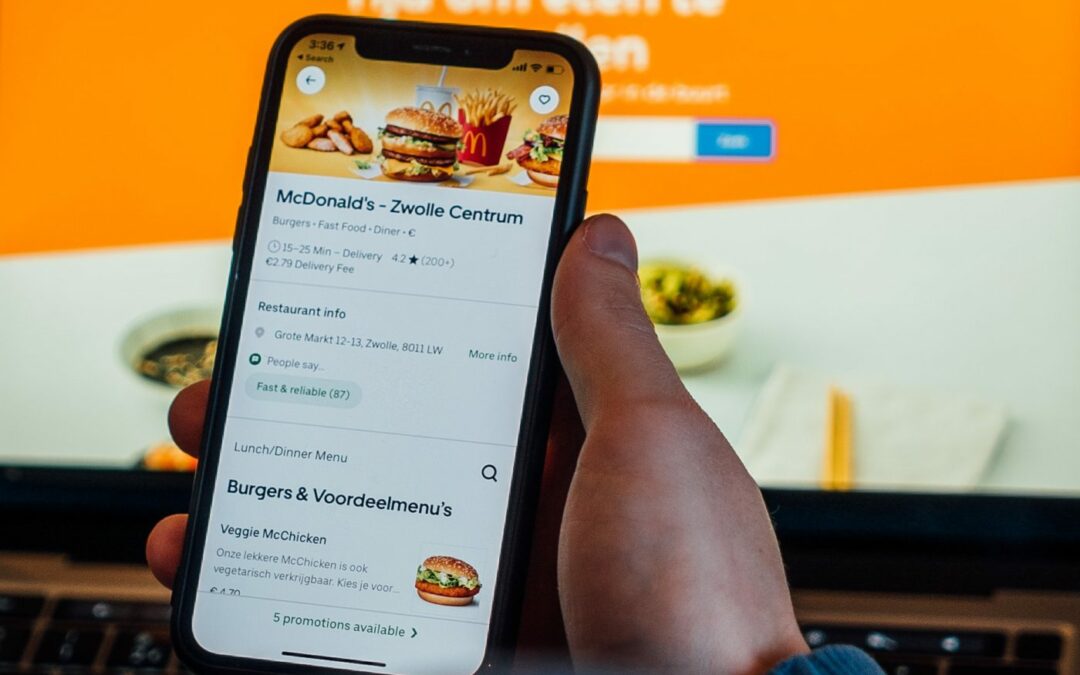On December 11, 2021 at 9:40 a.m., Uber made history by delivering a food package in space.
UberEats then took to Twitter to announce the incredible feat seen to completion by Japanese space tourist, entrepreneur, and billionaire Yusaku Maezawa.
What followed was a series of Tweets either celebrating UberEats’ monumental win or condemning the food delivery app platform for their no great shakes delivery services. While it may have caused a stir in outer space, some citizens of planet earth were left highly unimpressed. One customer expressed her displeasure by posting a video showing a brown paper bag of a fast-food chain dripping with soda. The food is wet and inedible.
If you’re lucky and already have a vast user base, complaining customers will give you a second chance, or even a third. However, suppose you’ve just tested the waters. In that case, an error such as this one can be detrimental to the growth and success of your business.
Food delivery challenges
Leaky packages, ill-packaged food items, unsustainable packaging, hard-to-remove adhesive tapes, pesky staples holding several bags together – these are the challenges that appear when you scratch the surface of the food app delivery app world.
Other common challenges food delivery apps or restaurants/eateries with online delivery options face include building a stable customer base and analyzing multiple marketing strategies. While building a customer base begins by identifying and choosing the right marketing strategies that will put you on the map, food and delivery quality will stabilize a growing base.
Likewise, unstable pricing models can wreak havoc on a new business finding its footing. For example, every day, many food delivery apps are vying for the number one spot with slashed prices, offers on display, or a chance to win big. What then can someone who’s just starting do in a situation such as this one?
Another major problem that will have customers switch from one food ordering app or website to another is faulty payment options. A patient customer will try several payment routes. By the third attempt, if the payment still doesn’t get through, you can most certainly expect him to ditch the effort.
If you’re new to the game, your best bet is to follow in the footsteps of leading food apps.
If someone else has cracked the code, don’t be afraid to copy it. The threat of big players will always loom large, but knowing what to avoid and what to integrate into your food app will set you apart. We live in a world that’s fickle; food trends come and go, and knowing when to tap into each trend and turn obstacles into advantages is the way to go forward.
Yet, you can solve many of these, in fact, all these problems by creating an app for your business. And the time to do so, is NOW.
Let’s talk numbers.
Third-party delivery channels can help boost sales by up to 20%. The digital food delivery market is expected to rake in $365 billion by 2023. 60% of the US consumers order in once a week.
But, these numbers shouldn’t surprise us. What we should do, instead, is prepare, and prepare well to hit these numbers.
By creating an app that meets the demands of possibly every foodie, every customer, and anyone using the internet, you’re well on your way to success.
Here’s the meat.
In-depth market research
To make your meals on wheels attractive and valuable, start with in-depth market research. Millennials and Gen Z are the primary customers but leave no room for doubt. Don’t walk into app designing with a preconceived notion of how the market behaves – the market’s mood is hard to read.
Consider all age groups when drafting a blueprint of what your platform will eventually entail. Be the user and walk their journey.
Don’t overwhelm the user
If you bombard the user with too many steps and ask for too many details, he will quickly jump ship. Remember that a user is most likely only to download an app because he’s hungry and he wants something quick.
Focus on what is essential – do you need a customer’s alternate e-mail address in 2022? All you need is a way to reach the user and a seamless payment option. If you’re making the customer spend hours to get on board, you’ve lost him already. When creating an interface, keep it as intuitive as possible.
Real-time tracking
Speaking of time crunches, another vital feature to include in your app is real-time tracking. While this may seem like a feature that’s now commonplace, you would be surprised that many don’t opt for it; especially when it comes to informing the customer of delays.
There may be delays in the kitchen due to a huge order – keep the customer informed – even if it means canceling the order. Keep a few buttons but ensure they are necessary. Make buttons as unambiguous as possible.
Gamification
Gamifying the app will give you a definite edge. When a customer plays a game for all the deals, coupons, discounts, and vouchers on offer, he’s also gambling on what’s in store for him. The suspense and excitement lure him to participate. Instead of showing the customer a 15% banner on the side, it’s more exciting for him to spin the wheel to win the discount.
Social media integration
We live in a world that’s connected by social media; one could even say social media is becoming our world. Therefore, social media integration is an essential feature to include in the app. Almost always, we post a picture of our drool-worthy photos on Instagram and other social media platforms. So why not take this blessing in disguise and turn it to your advantage?
Additional information
Knowing what the restaurant specializes in, the special of the day, or the chef’s background and history will affect how a person orders food and why he wants to order it. Any special tricks the restaurant is famous for? Let everyone know your strengths.
You’re not just delivering food. You’re delivering emotions, an ignition of the senses, and a promise of a culinary relationship.
Integrating UX UI design for an exceptional food delivery experience for guests
- Use plenty of white space as it enhances the high-quality images by lending visual hierarchy.
- Go for colors associated with food – think red, green, and yellow. Use them subtly to stir up the guests’ appetite.
- Focus on helping guests search for items quickly.
- Ensure the shortest journey – make them select the food items and checkout almost in a blink by minimizing the steps.
- Personalize their experience at every chance you get.
Whether you’re developing a food delivery app for a singular entity or a third-party channel, the problems remain the same – and fortunately, so do the solutions. There’s just one last thing you should note. Nobody likes bots. Introduce an in-chat option with real people to tackle real problems! The aim shouldn’t just be to deliver but also to solve a problem.
Transform your food app delivery business with UX UI design innovation. Connect with us to discover how.





Share